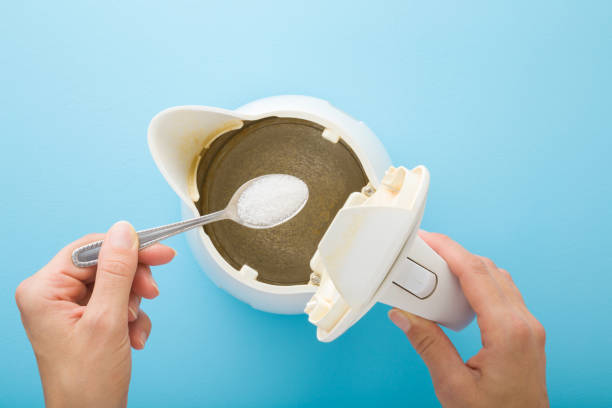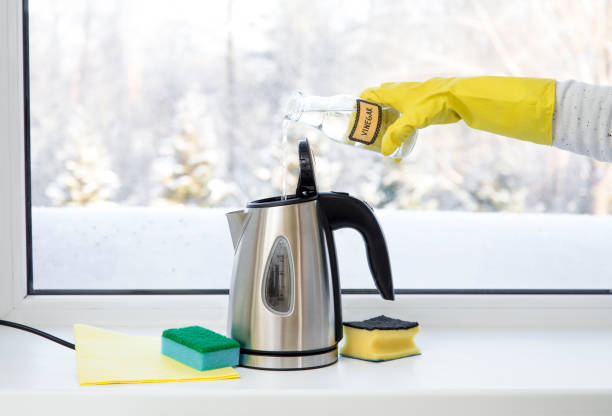Almost everyone owns a kettle these days. And everyone knows it: after a while, limescale builds up. Then it can take an eternity for the water to boil and the kettle becomes a power guzzler. That’s why we have instructions for descaling the kettle with natural home remedies.
This practical kitchen appliance has replaced the good old tea kettle in many households. They are available in both small and large versions. And with it, you can prepare tea in no time at all. But when it calcifies, it no longer works well. Then vinegar, baking soda, and co. will help you.
Causes of the lime deposits

The reason for a calcified kettle is usually hard water. Because then limescale forms in the cooker. And this settles mainly on the heating element and in the interior of the container. As a result, in regions where the water is medium or very hard, many experiences the problem more often. At the latest when the cooking time has doubled, you should do something. Because that costs unnecessary energy. Under no circumstances should you wait until there are lime residues in the water. Because lime eats away at the heating element and thus ruins the device. In addition, bacteria can be found in lime. And so it becomes a power guzzler. Consequently, you should use natural home remedies to remove limescale deposits.
Natural home remedies for descaling the kettle
Our grandmothers used natural home remedies and they have not lost their effectiveness. So when it’s time to descale your kettle, don’t use chemical cleaners. Because you can operate it with simple household items, such as the following. In addition, a properly functioning one ensures less energy consumption and thus makes a small contribution to environmental protection in the household.
1) Combat limescale with vinegar essence
The effective household remedy vinegar is a good way to clean your kettle and remove the limescale deposits. All you have to do is fill your kettle with about 1 liter of water. Then add a small cup of vinegar essence and let it boil. You should open the windows to counteract the strong smell. Then leave the mixture on for 1-2 hours. After dumping the vinegar water, run the kettle full of water at least 2 more times. Brown limescale in the toilet can also be removed with vinegar.
2) Descale the kettle with citric acid
If your kettle is only slightly calcified, you can cut a lemon in half. Then clean the stove with the cut surface. You should squeeze out the lemon juice well. Then rinse off with clear water. If you need to remove stubborn limescale from your kettle, you can also buy powdered citric acid and boil it in the water. In addition, note our tips for descaling and polishing the sink.
3) Baking soda and baking powder for descaling
The all-rounder baking soda and the popular household remedy baking powder can also be used for descaling. To descale the kettle with baking soda, you need to add about 1 tablespoon of baking soda to 200 ml of water. Then let the mixture boil. Then let the mixture sit for an hour before dumping it out. Then rinse it out well or run two more passes with normal water. Also, note our tips for descaling washing machines and dishwashers.

Instructions for descaling and cleaning the kettle
For a better overview, we have created step-by-step instructions for descaling the kettle using natural home remedies. So nothing can go wrong and your kettle is ready for use again. Depending on the severity of the calcification, you can repeat the process several times.
Prevent limescale in the kettle
You should descale your kettle regularly to prevent limescale deposits. You can also filter your water beforehand. This way you prevent the hard water from attacking the kettle. And such water filters are not expensive. The water also tastes better then.
